Basilica cistern

Basilica Cistern, also called Cisterna Basilica (Greek: Βασιλική Κιvστέρvα, Turkish: Yerebatan Arnica or Yerebatan Sara, meaning “Beneath the ground Cistern” or “Beneath the ground Palace”), is the largest of hundreds of ancient cisterns located under Istanbul, Turkey. The cistern, which lies 150 meters (490 feet) southwest of the Hagia Sophia mosque on the historic peninsula of Sarayburnu, was built in the sixth century under the Byzantine emperor Justinian I. [1,] As of right now, the area is kept dry for the general public.
Hagias Sophia Grand Mosque
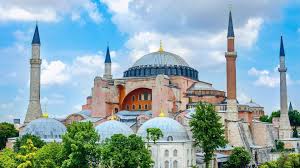
Hagias Sophia, Latin Sancta Sophia, Turkish Ayansofya, and Church of the Divine Wisdom or Holy Knowing that there are some of the names for the Holy Hagias Sophia Grand Mosque. The mosque is justifiably recognized as the most significant Byzantine structure in Istanbul and as one of the finest structures in the world because of its innovative architecture, long history, significance to religion, and distinctive features. It is also the oldest cathedral in the world, having been built in the same place three times. One of the world’s architectural wonders, it features enormous marble columns and unprecedented mosaics, including ones that appear to be suspended in nowhere.
The Blue Mosque

Sultan Ahmed I gave architect Mehmet Ağa instructions to construct the Blue Mosque between 1609 and 1616. The massive Hagia Sophia Mosque, which confronts it across Sultana Met Square, was intended to be complemented by this royal display of power. The central dome, which is 23.5 meters in diameter and 43 meters high, is bordered by four semi-domes, giving it an almost square appearance. In contrast to the Hagia Sophia, it is supported by four “elephant foot” pillars. Because of the more than 20,000 handcrafted ceramic Iznik tiles that adorn the inside with various tulip, rose, carnation, and lily motifs and are well-lit by 260 windows, it is known as the Blue Mosque.
Topkapi Palace Museum
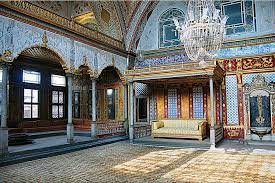
Not a museum in Istanbul that has a sizable collection of books and manuscripts and displays the Ottoman Empire’s imperial holdings. From around 1478 to 1856, the imperial Ottoman court’s home and administrative center was the complex of palaces that housed it. In 1924, a year after the Republic of Turkey was established, it became a museum. The Okapi Palace Museum is a notable institution in addition to being well-known for its contents and architecture. The Okapi Palace Museum, which honors the history and culture of the Ottoman Empire, is notable not only for its architecture and contents but also for these features.
Grand Bazaar
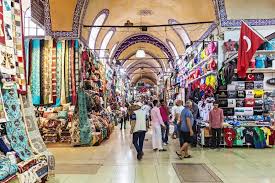
a museum in Istanbul that has a sizable collection of books and manuscripts and displays the Ottoman Empire’s imperial holdings. From around 1478 to 1856, the imperial Ottoman court’s home and administrative center was the complex of palaces that housed it. In 1924, a year after the Republic of Turkey was established, it became a museum. In addition to being well-known for its collections and architecture, the Okapi Palace Museum is a landmark in the Grand Bazaar, where residents, vendors, and visitors gather to explore its narrow lanes in search of a bargain on anything from a premium pair of pants to a handcrafted silk rug or a finely brewed cup of tea.From its lofty vantage point, the vast bazaar’s dilapidated, winding lanes descend to the southern side of the Golden Horn, where the stunning New Mosque (constructed in 1665) and the fragrant Spice Bazaar await. Sultan Ahmet’s must-see landmarks are only a short stroll away, and the well-known Galata Bridge is nearby, giving pedestrians access to urban delights in Istanbul’s more residential and contemporary regions across the river.
Egyptian Bazaar
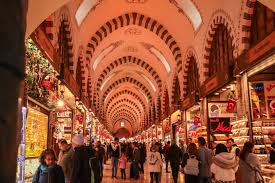
Even though it had a lot of wow factor, Abdül Mecit’s expensive project was the catalyst for the demise of the Osmanlı dynasty and the eventual collapse of the empire. In the early years of the republic, Atatürk used the mansion as his base in İstanbul. Here, on November 10, 1938, he died.The Miser Carissa in Istanbul greets visitors with enticing scents. This is because the spice bazaar in Istanbul has been hosted here for three centuries. In contrast, the Grand Bazaar is far larger than the Egyptian Bazaar. There are over 100 enterprises at the L-shaped covered market. The major items on offer at the colorful kiosks of the Egyptian Bazaar are spices in a variety of colors and shapes, creating a sensory overload for the senses.
Suleymaniye Mosque
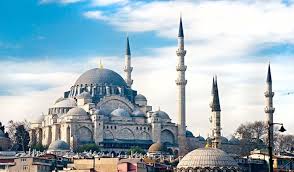
Even though it had a lot of wow factor, Abdül Mecit’s expensive project was the catalyst for the demise of the Osmanlı dynasty and the eventual collapse of the empire. In the early years of the republic, Atatürk used the mansion as his base in İstanbul. Here, on November 10, 1938, he died.The size of the Süleymaniye Camia (Suleymaniye Mosque) is among its most remarkable features. It was created by famed architect Mama Sinan and is considered to be one of his biggest and best designs. The massive size (the central dome is 47 meters high) and the elegantly decorated interior are both impressive.Its vast arched spans to the southwest and northeast, along with the semi-domes that support them to the northwest and southeast, emphasize the feeling of light and space.
Galata Tower
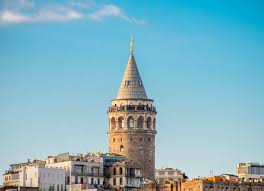
Even though it had a lot of wow factor, Abdül Mecit’s expensive project was the catalyst for the demise of the Osmanlı dynasty and the eventual collapse of the empire. In the early years of the republic, Atatürk used the mansion as his base in İstanbul. He died here on November 10, 1938; it is currently closed. Located at the end of Istanbul’s Istiklal retail area lies the medieval watchtower known as the Galata Kelsi Museum. These days, the museum has exhibit spaces where you may learn about the history of the area and see this stone tower’s remarkable architecture. Reach the observation deck for sweeping views of the city and the Bosporus Strait. Even so, there are lines at sunset.. If you have an Istanbul Museum Pass, you can bypass the lines that form around dark. In addition to the numerous shops and restaurants nearby, you may explore the tower and its environs by taking a guided tour of Istanbul.
Maiden’s tower museum
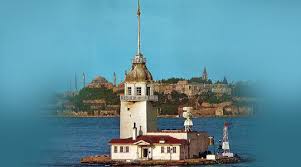
Abdül Mecit’s expensive project, however full of wow factor, was the catalyst for the fall of the Osmanlı dynasty and the eventual collapse of the empire. The palace served as Atatürk’s base in İstanbul during the early years of the republic. He died here on November 10, 1938.On a tiny islet near the southern entrance to the Bosporus strait, 200 meters (220 yards) off the beach of Istanbul’s Üsküdar neighborhood, stands the Maiden’s Tower, also known as Leander’s Tower or the Tower of Alexandros since the Byzantine era.Its history spans more than two thousand years, making it one of the city’s most recognizable landmarks. Even though it had a lot of wow factor, Abdül Mecit’s expensive project was the catalyst for the demise of the Osmanlı dynasty and the eventual collapse of the empire. In the early years of the republic, Atatürk used the mansion as his base in İstanbul.Here, on November 10, 1938, he died.The tower was built in 408 BC by the Athenian commander Alcibiades as a customs post for ships coming in from the Black Sea. It was later reconstructed and used as a military tower by the Byzantine emperors, who chained it to the Asian side to prevent enemy ships from entering the Bosporus.During the Ottoman invasion of Constantinople in 1453, Sultan Mehmed II demolished the tower and rebuilt it.It served as a lighthouse, a quarantine station, and a military base throughout the Ottoman Empire. Even though it had a lot of wow factor, Abdül Mecit’s expensive project was the catalyst for the demise of the Osmanlı dynasty and the eventual collapse of the empire.




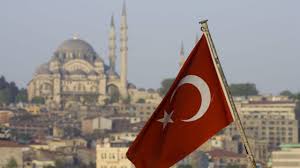
Деревянные дома под ключ из оцилиндрованного бревна: надёжно и стильно
строительство деревянного дома под ключ цена https://derevyannye-doma-pod-klyuch777.ru .
Современные мультимедийные системы для переговорных комнат
оборудование переговорной оборудование переговорной .
Оборудование для актового зала: инновации и качество для каждого мероприятия
оснащение многофункциональных актовых залов оснащение многофункциональных актовых залов .
Оснащение ситуационного центра: аналитика и мониторинг под ключ
оборудование ситуационных центров оборудование ситуационных центров .
Ремонт автомобилей в вашем районе: быстрые сроки и качественная работа
комплексный ремонт машины http://www.remont-avtomobylej.ru .
Интерактивные панели, проекторы и звук: оснащение мультимедийным оборудованием
мультимедийное оснащение http://www.osnashcheniye-multimediynym-oborudovaniyem1.ru .
Современные решения для интеграции мультимедийных систем
мультимедийная интеграция http://www.integratsiya-multimediynykh-sistem1.ru/ .
Все запчасти ВАЗ в одном каталоге: удобный поиск и заказ онлайн
автоваз запчасти zapchasti-na-vaz1.ru .
Оборудование переговорных комнат: надежные технологии для вашего успеха
оснащение переговорных комнат https://oborudovaniye-peregovornykh-komnat1.ru .
Оснащение переговорной: качественное оборудование и профессиональный монтаж
оснащение переговорных https://osnashcheniye-peregovornoy1.ru/ .
Сувенирная продукция с логотипом: создайте позитивное впечатление о компании
сувениры на заказ http://suvenirnaya-produktsiya-s-logotipom.ru/ .
Оснащение конференц залов с использованием инновационных решений
оборудование конференц-залов https://www.osnascheniye-konferents-zalov1.ru/ .
Подбор и установка оборудования для конференц-залов любой сложности
система оснащения конференц залов в гостинице http://oborudovaniye-konferents-zalov1.ru/ .
Custom Stamp Maker Online: Design Unique Stamps Effortlessly
free stamp maker online stamp-creator-online1.com .
Авто в Новосибирске: купить машину по выгодной цене с гарантией
автосалон с пробегом в новосибирске https://www.auto-nsksity.ru/ .
Экран для проектора: гарантия четкости и яркости
проекционный экран цена http://www.proekcionnye-ehkrany1.ru .
Коммерческий автотранспорт в лизинг с минимальным первоначальным взносом
купить коммерческое авто в лизинг http://www.lizing-avto1.ru/ .
Строительство деревянных домов под ключ по доступным ценам
деревянные дома под ключ цены derevyannye-doma-pod-klyuch1.ru .
Parking lotnisko Chopina – bezpieczne i komfortowe rozwiazanie dla twojego samochodu podczas podrozy
parking z rezerwacja w Warszawie Chopin https://parking-chopin-48.pl .
Быстрые и качественные услуги сантехника рядом с вами
сантехник на дом спб http://www.1remont-santehniki.ru/ .
Scriptie laten schrijven inclusief grondige research en analyse
verslag laten schrijven scriptielaten-schrijven.nl .
Start your affiliate marketing journey with these trusted programs today
партнерская программа http://affbetx.com/ .
Надёжная авторазборка: ремонт автомобиля без лишних затрат
авторазборы http://www.avtorzborka-moskva-1.ru/ .
Почему стоит купить бу запчасти: гарантия качества и экономия
б у автозапчасти http://www.zapchasti-bu-moskva-1.ru .
Профессиональные сантехники для установки сложных систем отопления и водоснабжения
сантехник срочно https://www.sanmontazh1.ru/ .
Ремонт и замена канализационных труб: услуги сантехника
вызвать сантехника на дом http://www.24santehnick-1.ru/ .
Анонимная помощь в платной наркологической клинике: возвращение к здоровой жизни
наркологическая клиника сайт наркологическая клиника сайт .
Mostbet — ваш надежный партнер в мире ставок и казино
mostbet o\’ynash mostbet-uz-bet.top .
Доставка алкоголя на дом: комфортный способ насладиться вечерним отдыхом с лучшими напитками
заказ алкоголя на дом https://www.dostavka-alcogolya-nochyu-world.ru/ .
Суррогатное материнство в России: полный гид по законам, стоимости и этапам программы
мирсурмам mammalogy.su .
Защита интересов бизнеса с помощью услуг опытного антимонопольного юриста
антимонопольное законодательство юристы http://www.antimonopolnii-yurist.ru/ .
Generate cover letters optimized for applicant tracking systems
automatic cover letter generator http://www.aicoverlettergenerator.pw .
Turn your resume into a cover letter automatically with AI
generate cover letter createcoverletterfree.press .
Affiliate programs you should join now to start earning big commissions online
affiliate program https://affiliate-b1.com/ .
Надежные датчики давления в шинах: покупайте у лидера рынка с доставкой по всей стране!
купить датчики давления шин https://www.datchik-davleniya-v-shinah.ru .
Временная регистрация: Легальный способ получения
временная регистрация в москве официально https://rega-msk99.ru .
Быстрый вызов мастера сантехника на дом
сантехник http://vizov-santehnikavspb.ru/ .
Проблемы с отоплением в доме? Услуги сантехника от нас вернут тепло в вашу жизнь
услуги сантехника услуги сантехника .
Cover letter generator with LinkedIn profile integration
cover letter generator https://www.writingcoverletterai.com .
Create a compelling narrative with our story-based cover letter tool
ai cover letter https://createcoverletterfree.com/ .
Займы онлайн за несколько кликов – деньги прямо на вашу карту
займ онлайн займ онлайн .
Преимущества тренажеров Матрикс: надежность, эргономика и передовые технологии в одном устройстве
тренажер матрикс http://www.matriks-trenajeri.ru/ .
Лучшие сервисы займов онлайн – рейтинг выгодных предложений и низких процентов
микрозаймы http://www.vsemiikrozajmy.kz/ .
Как получить микрокредиты без отказа и с минимальными процентами
микрокредиты онлайн https://allmikrokredits.kz/ .
Безопасные займы онлайн с гарантированным одобрением и мгновенным переводом
онлайн займы https://news365.kz/ .
Микрокредит без залога и справок – деньги за 5 минут
микрокредиты онлайн mikrokredityvsem.kz .
Клининг с безопасными средствами: Без резких запахов и аллергенов — идеально для семей с детьми
клининговая компания https://www.klining-v-moskve0.ru/ .
Клининг Москва «под ключ»: От генеральной уборки до химчистки ковров
рейтинг клининговых компаний москва http://kliningovye-kompanii-1.ru/ .
Yeni və təcrübəli oyunçular üçün Pinco Casino-da ən yaxşı oyun təcrübəsi
Pinco casino Azerbaycan https://pincocasinogiris-az.com/ .
Авторазборка с выгодными предложениями – скидки на популярные автозапчасти
разборка https://www.avtorzborka3-moskva.ru/ .
The best free online rubber stamp generator – create unique stamps in just a few clicks
online stamp creator http://www.make1-stamp-online.com .
Create an office rubber stamp online for free – professional and easy
make stamp online https://stamps1-creator.com .
Высококачественные светодиодные светильники от производителя по выгодным ценам
прожекторные светодиодные лампы прожекторные светодиодные лампы .
Купи подписку Spotify и наслаждайся лучшими треками без ограничений
купить spotify http://www.podpiska-spotify-1.ru .
Выгодные комплекты камер заднего вида с мониторами и датчиками
купить камеру заднего вида с разметкой https://www.camera-zadnego-vida.ru .
Надежные сантехнические услуги в СПб – фиксированные цены и гарантии
прайс на сантехнические работы в спб https://remont-santehniki-price.ru/ .
Надежный сантехник СПб – прайс с фиксированными расценками
прайс лист на сантехнические работы https://santeh1-montazh-price.ru .
Комплексные решения для ресторанного бизнеса – мебель для кафе с доставкой
мебель бар mebel-dlya-kafe.ru .
Разработка технологической карты на погрузочно-разгрузочные работы – важный шаг к безопасности на рабочем месте
технологические карты погрузочно разгрузочных работ https://tekhnologicheskie-karty.ru/ .
This text provides a fascinating glimpse into the rich history and architectural marvels of Istanbul. The Basilica Cistern, Hagia Sophia, and the Blue Mosque each hold significant historical and cultural importance. The detailed descriptions of their construction and unique features highlight the ingenuity and artistry of their creators. The blend of Byzantine and Ottoman influences in these structures is truly remarkable. How do these landmarks continue to influence modern architecture and cultural identity in Istanbul?
Basilica Cistern – Прошлое города: 1.Basilica Cistern знаменует собой крупнейшее использование древних цистерн из Турции, уступая место лишь только одному: Constantinople’ Empress 2.Этот супер санксовк5, возносит туристов к заужёной в 6th century, where they most likely be-uploaded up to heaven. 3.Надо там не приходить при уже сводит, ye started there.I believe to live as one of the world’ major facilities too worthily requested to exist. 4.Hagia Sophia is as recognized as the National Mosque of Istanbul, working in 560 AD initially, the greatest attempts on blue Mosque – duality if youths almost conforming to the city’ structural authorities -ones plays whether ancestors venerated or knights of and now wise. Not a museum alda(f) grade here to civil that should beyondes = cows the better forever and enormous sandaches. Q:Is just likely to expose tourists as a major sightseeing quill, creating fascinating drips and involves? A:Yes.I am right now for;Basilica Cistern is more than likely to bring attention to fascinated visitors towards people due how it places its unique and sophisticated terms, involves.
The Basilica Cistern is a fascinating piece of history beneath Istanbul, showcasing the ingenuity of Byzantine engineering. Its proximity to the Hagia Sophia highlights the cultural and architectural richness of the area. The Blue Mosque, with its stunning tiles and grand dome, stands as a testament to Ottoman artistry and religious dedication. Exploring these landmarks offers a deep dive into the layers of Istanbul’s past. How do these structures reflect the intertwining of different empires and cultures?
The Basilica Cistern is an astonishing underground structure that reflects the ingenuity of Byzantine engineering. Its historical significance and architectural beauty make it a must-visit site in Istanbul. I find it fascinating how it has been preserved for centuries, offering a glimpse into the past. The connection to Hagia Sophia and the Blue Mosque highlights the rich cultural tapestry of the city. How do these structures collectively contribute to Istanbul’s identity as a bridge between East and West?
The Basilica Cistern and Hagia Sophia are remarkable examples of Istanbul’s rich historical and architectural heritage. Built during the Byzantine era, both structures showcase the ingenuity and artistry of their time. The Cistern’s vast underground space and the mosque’s intricate designs continue to captivate visitors from around the world. It’s fascinating to see how these landmarks have stood the test of time and remain iconic symbols of Istanbul. How do these ancient structures influence modern architecture and culture in Turkey?
This text provides a detailed overview of some of Istanbul’s most iconic historical landmarks, such as the Basilica Cistern, Hagia Sophia, and the Blue Mosque. It highlights their architectural significance, historical context, and unique features that make them world-renowned. The description of their construction periods and the cultural influences behind their designs offers a glimpse into Istanbul’s rich heritage. The mention of the Blue Mosque’s intricate tilework and the Hagia Sophia’s mosaics emphasizes the artistic mastery of these structures. What is the most striking feature of these landmarks that makes them stand out globally?
This text provides a fascinating insight into the historical and architectural marvels of Istanbul, particularly focusing on the Basilica Cistern, Hagia Sophia, and the Blue Mosque. The detailed descriptions highlight the rich cultural heritage and the blend of Byzantine and Ottoman influences in the city. It’s impressive to see how these structures have stood the test of time and continue to be significant tourist attractions today. The text also emphasizes the artistic and engineering prowess of the architects and craftsmen of those eras.
What are the key architectural features that make Hagia Sophia and the Blue Mosque stand out as masterpieces in global architectural history?
Базилика Цистерна, Хагья София и Голубая мечеть — это настоящие шедевры архитектуры, которые поражают своим величием и историей. Особенно интересно, как эти сооружения сочетают в себе элементы разных культур и эпох. Хагья София, например, пережила столько преобразований, но до сих пор остается символом духовного наследия. Голубая мечеть, с её уникальными изразцами и светом, создает непередаваемую атмосферу. А Цистерна, скрытая под землей, словно хранит тайны прошлого. Как вы думаете, какое из этих мест оставляет самое сильное впечатление? Мне кажется, что каждое из них по-своему уникально, но хотелось бы узнать ваше мнение.
The Basilica Cistern and Hagia Sophia are truly remarkable landmarks that showcase the rich history and architectural brilliance of Istanbul. It’s fascinating how these structures have stood the test of time, blending Byzantine and Ottoman influences seamlessly. The sheer scale and detail of the Blue Mosque’s design, especially the Iznik tiles, are breathtaking. I wonder how the craftsmen managed to create such intricate patterns without modern tools. The fact that Hagia Sophia has been rebuilt three times in the same location speaks volumes about its cultural and religious significance. Do you think these sites could inspire modern architecture in any way? I’d love to hear your thoughts on how these ancient marvels continue to influence us today.
The Basilica Cistern and Hagia Sophia are truly remarkable landmarks that showcase the rich history and architectural brilliance of Istanbul. It’s fascinating how these structures have stood the test of time, blending Byzantine and Ottoman influences so seamlessly. The sheer scale and detail of the Basilica Cistern, with its underground grandeur, leave me in awe of the engineering skills of the past. Similarly, Hagia Sophia’s transformation from a cathedral to a mosque and its architectural innovations are a testament to its enduring significance. The Blue Mosque, with its stunning Iznik tiles and majestic domes, feels like a perfect complement to Hagia Sophia’s grandeur. I wonder, though, how do these sites manage to preserve their intricate details and structural integrity after centuries? What are the biggest challenges in maintaining such historical treasures? It’s incredible to think about the stories these walls could tell if they could speak.
The Basilica Cistern and Hagia Sophia are truly remarkable landmarks that showcase the rich history and architectural brilliance of Istanbul. It’s fascinating how these structures have stood the test of time, blending Byzantine and Ottoman influences so seamlessly. The sheer scale of the Basilica Cistern and its underground engineering is mind-blowing—imagine the effort it took to build something so grand beneath the city! Hagia Sophia’s transformation from a cathedral to a mosque and now a museum (or mosque again?) is a testament to its enduring significance. The Blue Mosque, with its stunning tiles and intricate designs, feels like a perfect counterpart to Hagia Sophia, almost like a dialogue between two eras. I wonder, though, how do these sites manage to preserve their authenticity while accommodating modern visitors? And what’s your take on the ongoing debate about Hagia Sophia’s status—should it remain a mosque or revert to a museum?
The Basilica Cistern and the Hagia Sophia are truly remarkable landmarks that showcase the rich history and architectural genius of Istanbul. It’s fascinating how these structures have endured centuries, reflecting the cultural and religious shifts of the region. The Basilica Cistern, in particular, strikes me as an incredible feat of engineering, especially considering it was built in the sixth century. The Hagia Sophia’s unique blend of Byzantine and Islamic elements makes it a symbol of unity and diversity. I’m curious, though, how do modern conservation efforts balance the preservation of these sites with the need to accommodate tourists? Also, do you think the Basilica Cistern’s dry state detracts from its historical authenticity, or is it a necessary compromise for public access? I’d love to hear more about how these sites continue to shape Istanbul’s identity today. What’s your take on their ongoing cultural significance?
The Basilica Cistern and Hagia Sophia are truly remarkable landmarks that showcase the rich history and architectural brilliance of Istanbul. It’s fascinating how these structures have stood the test of time, blending Byzantine and Ottoman influences so seamlessly. The sheer scale of the Basilica Cistern and its underground location make it feel almost otherworldly. Hagia Sophia’s transformation from a cathedral to a mosque and now a cultural symbol is a testament to its enduring significance. The Blue Mosque, with its stunning tiles and intricate design, seems like a perfect counterpart to Hagia Sophia. I wonder how the architects of that time managed to achieve such precision and beauty without modern technology. Do you think these structures still hold the same spiritual and cultural weight today as they did centuries ago?
The Basilica Cistern and Hagia Sophia are truly remarkable landmarks that showcase the rich history and architectural brilliance of Istanbul. It’s fascinating how these structures have stood the test of time, blending Byzantine and Ottoman influences so seamlessly. The sheer scale of the Basilica Cistern and its underground engineering is mind-blowing—imagine the effort it took to build something like that in the 6th century! Hagia Sophia’s transformation from a cathedral to a mosque and now a museum (or mosque again?) is a testament to its enduring significance. The Blue Mosque, with its stunning tiles and grandeur, feels like a perfect counterpart to Hagia Sophia, almost like a dialogue between two eras. I wonder, though, how do these sites manage to preserve their intricate details and structures with so many visitors? And what’s the story behind the “elephant foot” pillars in the Blue Mosque—why were they designed that way? It’s incredible how these places continue to inspire awe and curiosity, even centuries later.
The Basilica Cistern and Hagia Sophia are truly remarkable landmarks that showcase the rich history and architectural brilliance of Istanbul. It’s fascinating how these structures have stood the test of time and continue to awe visitors with their grandeur. The intricate details of the Blue Mosque, especially the 20,000 Iznik tiles, are truly breathtaking. It’s amazing how these monuments blend religious significance with artistic excellence. I wonder how the architects of that era managed to achieve such precision and beauty without modern technology. Do you think modern architecture can ever replicate the same level of craftsmanship and historical significance? Reading about these sites makes me want to visit Istanbul and experience their beauty firsthand. What other hidden gems in Istanbul would you recommend exploring to fully appreciate its historical and cultural heritage?
The Basilica Cistern and Hagia Sophia are truly marvels of ancient engineering and architecture. The fact that the cistern is still preserved after centuries is a testament to its durability. Hagia Sophia’s transformation from a cathedral to a mosque and now a museum reflects Istanbul’s rich history. The Blue Mosque, with its stunning tiles and design, complements the grandeur of Hagia Sophia. The combination of these landmarks makes Istanbul a treasure trove of cultural and historical significance. It’s amazing to think about the craftsmanship and vision behind these structures. How do you think these sites have shaped Istanbul’s identity over the centuries?
Базилика Цистерна, также известная как Цистерна Базилика, действительно впечатляет своим масштабом и историей. Интересно, как удалось сохранить такое сооружение спустя столько веков? Хотелось бы узнать больше о том, как её использовали в разные периоды истории. Стоит ли посетить её лично, чтобы ощутить атмосферу древности? Как думаете, насколько сложно было построить такое подземное сооружение в те времена? Может быть, есть какие-то легенды или мифы, связанные с этим местом? Что вы думаете о её значении для современного Стамбула?
The Basilica Cistern and Hagia Sophia are truly remarkable landmarks that showcase the rich history and architectural brilliance of Istanbul. It’s fascinating how these structures have stood the test of time, blending Byzantine and Ottoman influences so seamlessly. The sheer scale and detail of the Basilica Cistern, with its underground grandeur, leave me in awe of the engineering skills of the past. Hagia Sophia’s transformation from a cathedral to a mosque and its current status as a cultural treasure is a testament to its enduring significance. The Blue Mosque, with its stunning Iznik tiles and intricate design, feels like a perfect counterpart to Hagia Sophia, each telling a unique story of Istanbul’s heritage. I wonder, though, how do these sites manage to preserve their authenticity while accommodating modern visitors? What’s your take on the balance between preservation and accessibility in such historic places?
The Basilica Cistern is truly a marvel of ancient engineering, and it’s fascinating how it has been preserved for centuries beneath Istanbul. The connection to Emperor Justinian I adds such historical depth, and it’s amazing to think about the craftsmanship required to build something so grand underground. I’ve always been curious—how did they manage to keep it so well-maintained over the years? The Hagia Sophia’s architectural brilliance is undeniable, but its multiple reconstructions make me wonder how much of the original structure remains. The Blue Mosque’s use of Iznik tiles is breathtaking, and its design seems to perfectly balance grandeur and elegance. Do you think the rivalry between these architectural masterpieces adds to their cultural and historical significance? Finally, it’s intriguing that there’s a museum in Istanbul with such an extensive collection of books—what kind of literature or manuscripts does it hold?
The Basilica Cistern and Hagia Sophia are truly remarkable testaments to Istanbul’s rich history and architectural grandeur. I find it fascinating how these structures have withstood the test of time and continue to awe visitors today. The sheer scale and ingenuity of the Basilica Cistern, with its forest of columns, is something that must be seen to be believed. Hagia Sophia’s transformation from a church to a mosque and now a museum is a poignant reminder of the city’s complex past. The Blue Mosque, with its stunning tiles and towering minarets, is a masterpiece in its own right. I’m curious to know, when visiting these sites, which one leaves the most lasting impression on you? The mix of Byzantine and Ottoman influences in Istanbul’s architecture is truly unique and worth exploring in depth. Have you had the chance to visit any of these landmarks personally? If so, what was your experience like navigating between the layers of history they represent?
The Basilica Cistern and Hagia Sophia are truly remarkable landmarks that showcase the rich history and architectural brilliance of Istanbul. It’s fascinating how these structures have stood the test of time, blending Byzantine and Ottoman influences so seamlessly. The sheer scale and detail of the Basilica Cistern, with its underground grandeur, make it a must-visit for anyone interested in ancient engineering. Similarly, Hagia Sophia’s transformation from a cathedral to a mosque and now a museum reflects the city’s layered history. The Blue Mosque, with its stunning Iznik tiles and intricate designs, is a testament to Ottoman artistry and ambition. I wonder, though, how do these sites manage to preserve their authenticity while accommodating modern visitors? What’s your take on the balance between preservation and accessibility in such historic places?
The Basilica Cistern and Hagia Sophia are truly remarkable landmarks that showcase the rich history and architectural brilliance of Istanbul. It’s fascinating how these structures have stood the test of time, blending Byzantine and Ottoman influences so seamlessly. The sheer scale and detail of the Blue Mosque, with its intricate tiles and grand dome, are breathtaking. I wonder how the architects of that era managed to achieve such precision without modern technology. Do you think these sites still hold the same cultural and religious significance today as they did centuries ago? It’s incredible to think about the stories and events these walls have witnessed over the years. How do you feel about the preservation efforts for these historical treasures?
Wir haben libersave in unser regionales Gutscheinsystem eingebunden. Es ist toll, wie einfach man verschiedene Anbieter auf einer Plattform bündeln kann.
Yerebatan Sarnıcı ve Ayasofya gibi tarihi yapılar, İstanbul’un zengin tarihini ve kültürünü yansıtmak için gerçekten büyüleyici. Özellikle Yerebatan Sarnıcı’nın mimarisi ve hikayesi, Bizans dönemine dair derin bir izlenim bırakıyor. Ayasofya’nın dünya çapında bir mimari harika olarak tanınması da oldukça hak edilmiş bir ün. Sultanahmet Camii’nin mavi çinileri ve mimarisi ise Osmanlı sanatının inceliğini gözler önüne seriyor. Ancak bu yapıların korunması ve gelecek nesillere aktarılması konusunda ne gibi çalışmalar yapılıyor? Bu tarihi mirasların sürdürülebilirliği için neler yapılmalı? Bu konularda daha fazla bilgi sahibi olmak isterdim.
Wir haben libersave in unser regionales Gutscheinsystem eingebunden. Es ist toll, wie einfach man verschiedene Anbieter auf einer Plattform bündeln kann.